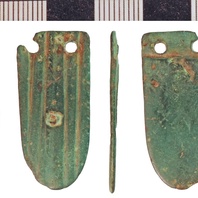
Viking Objects
Copper-Alloy Strap-End (NLM-B633CE)
The decoration on this cast copper-alloy strap-end involves a series of deep longitudinal grooves which may actually represent previous damage. If decorative, the object is similar to Thomas Class E Type 3 strap ends whose distribution generally falls in the eastern Danelaw and around the Irish Sea. Strap ends came in various styles and were fairly common throughout the Viking world. They were used to decorate the ends of belts and to stop them getting damaged.
Read More
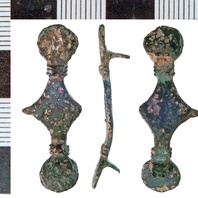
Viking Objects
Frankish Brooch (NLM-826868)
This copper-alloy brooch is either an equal-armed or ansate brooch. The ansate form is a Frankish style. It is possible that it made its way to England prior to Viking incursions but it is equally likely that the Vikings brought this brooch with them as plunder after raiding in Frankia. For more information on Scandinavian jewellery in England check out our blog: Brooches, Pendants and Pins: Scandinavian Dress Accessories in England.
Read More
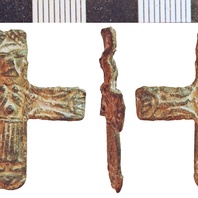
Item
Crucifix Pendant (NLM-AD60CD)
The settlement of Scandinavians in the Danelaw inevitably led in the end to their conversion to Christianity, though how this process happened and how long it took varied in different parts of the country and is still not fully understood. Finds from Scandinavian-settled areas, like this crucifix with a clear image of Christ on the cross, may well be evidence for this process.
Read More
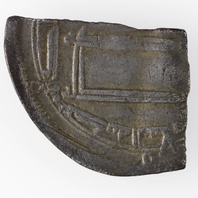
Viking Objects
Abbasid Silver Dirham (CM_773_2008)
This coin was minted at al-‘Abbasiyya. The dirham was a unit of weight used across North Africa, the Middle East, and Persia, with varying values which also referred to the type of coins used in the Middle East during the Viking Age. These coins were extremely prized possessions not only for their silver value but as a way of displaying ones wealth and vast trade connections. Millions of Arabic Dirhams would have been imported throughout the Viking world and are mostly found in hoards. Reduction in access to silver coins like this is thought to have been one of the causes of the Viking Age.
Read More
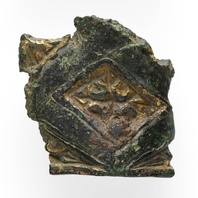
Viking Objects
Broken Gilt Vessel (CM.1822.2008)
A broken gilt vessel fragment decorated with a Carolingian motif within a repeated diamond pattern. A single iron rivet provides evidence that this vessel might have been repaired and reused. The vessel will have been brought from Francia to Torksey, Lincolnshire, where it was found, perhaps by a member of the Great Heathen Army or its train.
Read More
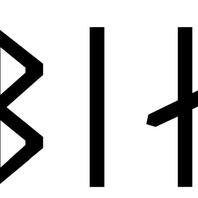
Viking Names
Asbjorn
Ásbjǫrn was a common name in Norway from the time of the settlement of Iceland (c. 870-930) onwards, and is common in Swedish and Danish runic inscriptions. Forms in Æs- are very common in Denmark and a few runic forms likely represent these spellings. Additionally there are numerous instances of the form Osbern found in Normandy which are possibly loans from England. It is a Old Norse compound name with the first element, Ás-, from Old Norse ás, óss ‘a god’, combined with bjǫrn, ‘bear’. It was common for Viking Age Scandinavian personal names to use animals as name-forming elements. Several place-names in Lincolnshire and Yorkshire may include the Low German male personal name Osbern, although the name is more likely to be an anglicised form of Old Norse Ásbjǫrn, as in Osbournby in Lincolnshire, and the name is also recorded in medieval documents from both Lincolnshire and Yorkshire.
Read More
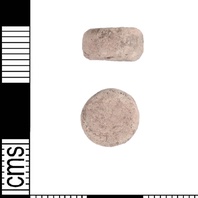
Viking Objects
Round Lead Weight (PUBLIC-2DDD03)
Weights are an important form of evidence for Viking Age commerce and the use of standards across the different economic systems within which Vikings were integrated. Many of the weights discovered, particularly ones in Ireland and those of Arabic type, suggest that a standardized system of weights existed in some areas. These standard weights, alongside standard values of silver, are what allowed the bullion economy of Viking occupied areas to function. A bullion economy was a barter economy that relied on the exchange of set amounts of precious metal in various forms, such as arm-rings or coins, for tradable goods, such as food or textiles. Each merchant would have brought their own set of weights and scales to a transaction to make sure that the trade was conducted fairly.
Read More
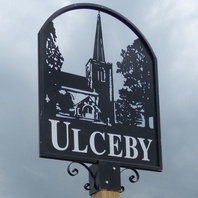
Viking Names
Ulceby
Ulceby, in the Yarborough Wapentake of Lincolnshire, is a Scandinavian compound from the Old Norse male personal name Ulfr and by ‘farm, settlement’. It is noteworthy that the first element has a Scandinavian genitive (a case that indicates relationships or ownership), as in the identical name Ulceby with Fordington and other place-names in Lincolnshire like Braceby, Haceby, Laceby, Rauceby and Winceby, and this survives today.
Read More
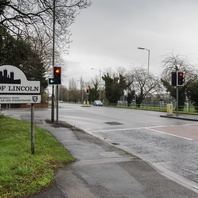
Viking Names
Lincoln
Lincoln is one of the Five Boroughs of the Danelaw. The original name is derived from pre-English lindo, pre-Welsh linn ‘a pool’, which likely refers to the broad pool in the River Witham, now known as Brayford. The pre-English form of Latin colonia was added after the establishment here of a settlement of legionaries in succession to the earlier fortress.
Read More
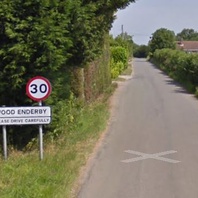
Viking Names
Wood Enderby
The name Enderby probably comes from the Old Norse male personal name Eindriði and the Old Norse element by ‘farm, settlement’. ‘Wood’ was added later to distinguish this part of the settlement from Bag Enderby and Mavis Enderby.
Read More
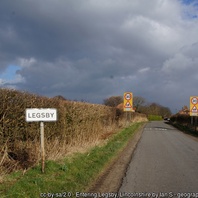
Viking Names
Legsby
Legsby, in the South Riding of Lindsey of Lincolnshire, comes from the Old Norse male personal name Leggr and the Old Norse element by ‘farmstead, village’. The boundary between Legsby and Linwood was recorded as Leggeshou/ Legeshou/ Leggeshow ‘Legg’s mound, burial mound’ presumably named from the same man and Old Norse haugr ‘hill, mound, a burial mound’.
